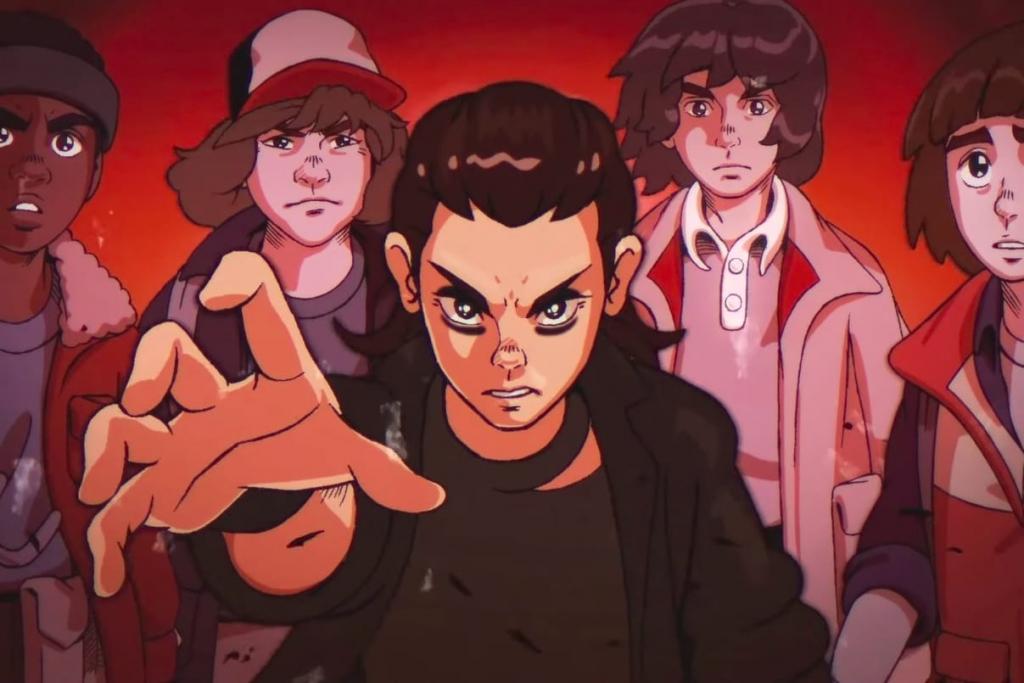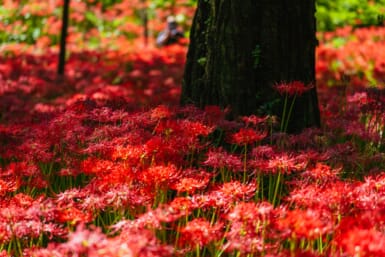The latest season of Stranger Things has further opened an appetite for all things retro. Netflix confirmed a fifth season is coming, but that will probably be a long wait. You can always watch reruns of Scooby-Doo in the meantime or you can widen the scope a bit. Aesthetically speaking, Stranger Things borrows from American pop culture in the 1980s, but the themes are fairly universal. Whether it’s experimenting on orphan children, alien parasites, or portals to other worlds, there are plenty of Japanese anime series with similar themes to Stranger Things. Here are some to check out.
1. Akira: Secret experiments and destructive superpowers
Let’s start with the one that the creators of Stranger Things list as one of their many inspirations for the show. Akira is a cult classic from 1988, worth a watch regardless. For those looking for similarities to Stranger Things, Akira has plenty. Although set in a future neo-Tokyo, the anime was created in the ’80s, the decade that Stranger Things is set in. So, there are some overlaps in terms of the fashion and hairstyles, as well as the music. But more importantly, the plots are very similar. Tetsuo and Eleven are both children with superpowers locked in a secret facility and being experimented on. Both have an epic superpowered meltdown with major consequences. Notoriously, in Akira, Tetsuo destroys the Tokyo Olympic Stadium, an eerie prediction considering the postponement of the 2020 Games.
What else to expect: Unlike a multi-season show, you have only a short time to spend with the characters in Akira. The vibe is also a bit more adult, so instead of kids on bicycles, we follow a biker gang in Akira.
2. Elfen Lied: A superpowered girl walks out of a medical facility…
And that’s how the mystery starts and the plot thickens. A girl raised in a laboratory who can’t speak well escapes in episode one, leaving bloodshed behind. Sound familiar? This is both the beginning of the story of Eleven and of Lucy in Elfen Lied. After Lucy escapes, she loses her memory and is found and taken in by a group of well-meaning kids. As they shelter her, they end up in the crossfire of several government conspiracies and groups that are after Lucy. The Stranger Things creators have also named Elfen Lied as one of the shows that inspired them.
What else to expect: Similarly to Akira, Elfen Lied is far bloodier and gorier than Stranger Things. Consider yourself warned.
3. Charlotte: More superpowered children in dangerous situations
This idea of a charming group of kids that stick together during times of great danger was a big draw for Stranger Things. Similarly, in Charlotte, kids form a tight-knit group in the Hoshinoumi Academy to keep each other safe. Terrorist groups want to kidnap the children who have developed superpowers as influenced by the passing of the Charlotte comet. There’s a lot of grappling with power and responsibility, memory loss and running and hiding from different organizations.
What else to expect: Unlike Stranger Things, all of the main characters in Charlotte have a superpower. They are not locked away from the world like Eleven, so expect school scenes and some slice-of-life comic relief. Less horror and darkness compared to Stranger Things.
4. The Promised Neverland: of orphans and horrors
Back to the theme of orphaned children locked in a facility together, The Promised Neverland is a horror anime with a perfect dose of mystery. Emma is the 11-year-old protagonist. The children grow up with one Mama (similar to Papa in Stranger Things) and have numbers tattooed on them. They have no knowledge of the outside world or the demons awaiting them.
What else to expect: The orphans in The Promised Neverland have an idyllic life in their confinement, unlike the children with buzz cuts and hospital gowns in Papa’s facility. They don’t have superpowers, only strong friendships like the kids from Hawkins.
5. Fantastic Children: The special girl and the other world
A group of children are searching for a special little orphan girl who barely speaks. That’s Tina (or Helga to some people) and although most of the characters around her don’t know it, she has some latent supernatural powers. She often gets strange visions and draws them compulsively. There are also secret government experiments on people, lost memories, ancient mysteries and dark shadows attacking the children’s minds and throwing them into a trance-like state. That last part is eerily similar to the fourth season of Stranger Things.
What else to expect: Fantastic Children goes deeper into the past (mostly late 19th century Europe) and features early scientific innovations and classical myths. There’s not much horror in the anime, but no comedy either. The mystery drives the plot, aided by action scenes. However, it feels more slow-paced than Stranger Things.
6. Parasyte The Maxim: The Demogorgons come for everyone
In this anime, one teenager fights off alien monsters coming to Earth and possessing humans. And with faces that open like gruesome flowers with teeth, they happen to look very much like the Demogorgon from Stranger Things. The original story in the manga is from the ’80s, while the anime and movie adaptations are from 2014 and 2015. So just like Stranger Things, there is some ’80s flavor. Most similarities, however, end there.
What else to expect: The shows differ in plot, as well as in the personality of the characters. Parasyte is often more philosophical, pondering themes of what it means to be human. It’s still gory though, to the extent that it has been banned in China.
Featured image courtesy of 3D animation studio Humouring the Fates.
Check out their anime version of Stranger Things video here.
Updated On February 8, 2023








